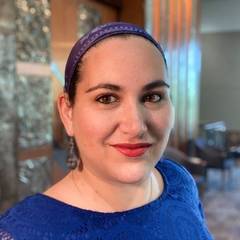 Cantor Hinda Eisen Labovitz has proudly served Ohr Kodesh as cantor and director of its educational programs since 2014. She has enjoyed opportunities to teach periodically from the pulpit and in classroom settings throughout her tenure at Ohr Kodesh. This blog is a record of some of Cantor Labovitz's sermons and lectures.
Cantor Hinda Eisen Labovitz has proudly served Ohr Kodesh as cantor and director of its educational programs since 2014. She has enjoyed opportunities to teach periodically from the pulpit and in classroom settings throughout her tenure at Ohr Kodesh. This blog is a record of some of Cantor Labovitz's sermons and lectures.
Please feel free to reach out to Cantor Labovitz by email or set a meeting by clicking here.
Upcoming Events and Classes with Cantor Labovitz



